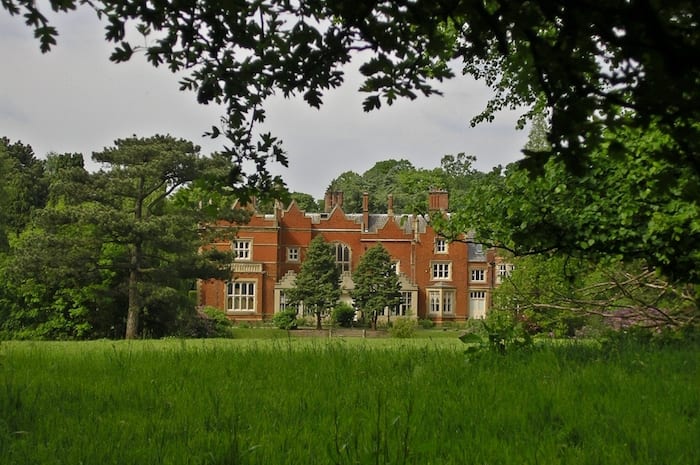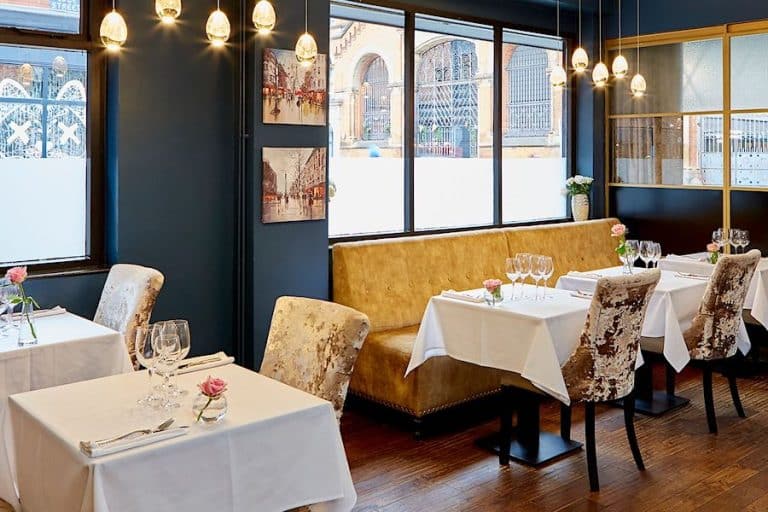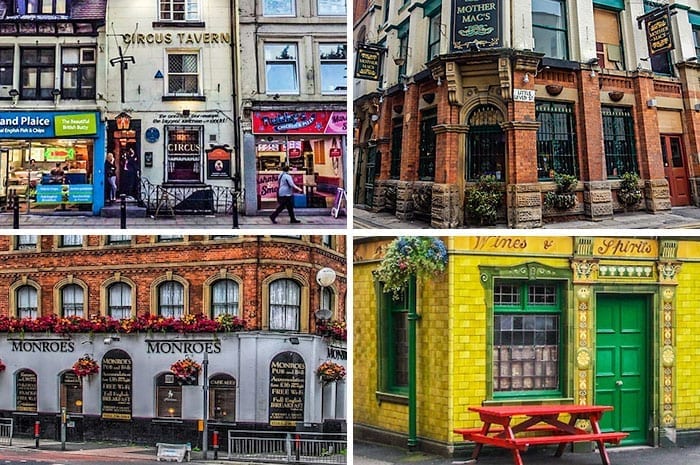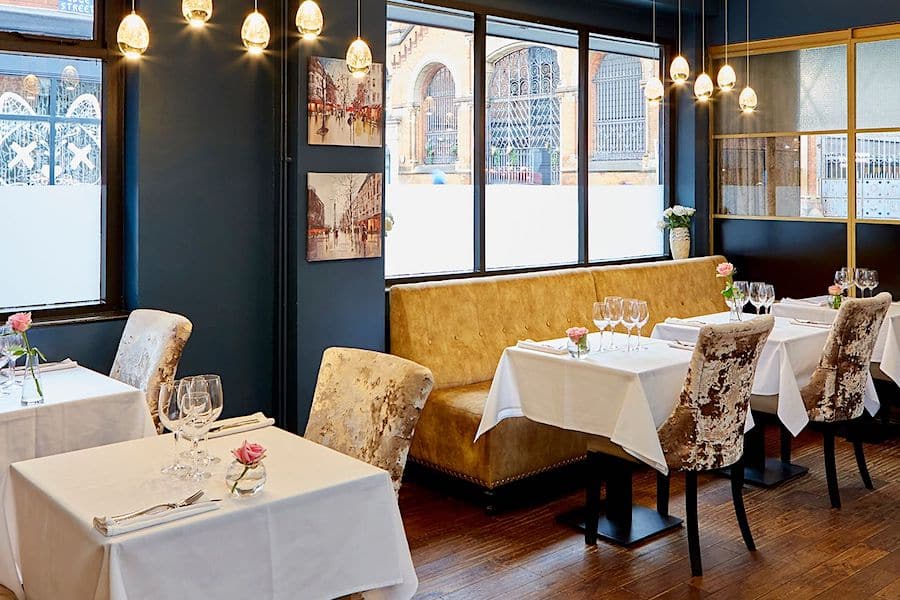Murder on the Orient Express’s connection to a 19th Century mansion in Cheadle
- Written by Ray King
- Last updated 8 years ago
- Books, Cinema

The trailer for the latest star-studded movie version of Agatha Christie’s Murder on the Orient Express has just been released. But few know that the Queen of Crime was inspired to become the world’s best-selling mystery writer in the leafy Stockport suburb of Cheadle.
There’s no blue plaque outside Abney Hall, Manchester textile tycoon Sir James Watt’s mid-Victorian stately mansion just off the M60, less than a mile from the Manchester-Stockport boundary. But there should be.
For this is the place where the young Agatha Mary Clarissa Christie, nee Miller, was inspired to become the best-selling fiction writer of all time. Author of 66 novels over half a century – many made into films and some, like the latest, more than once.
But put Abney Hall into the search engine of the official website agathachristie.com and you’ll draw a complete blank. The authorised version has it that “Christie’s England” is Devon – and in particular, Greenaway, her home overlooking the River Dart – London, and the fictional village St Mary Mead. But of the 19th Century mansion close to the multiplex cinema at Parrs Wood where the latest blockbuster will undoubtedly be screened later in the year – there is no clue.
Yet magical childhood memories of time spent at Abney Hall stayed with Christie all her life. She was 70 when, in the foreword of what she describes as her “book of Christmas fare” – The Adventure of the Christmas Pudding and Other Stories – she recalled “superb and wonderful” hospitality there.
“The Adventure of the Christmas Pudding,” she wrote, “is an indulgence of my own, since it recalls to me, very pleasurably, the Christmases of my youth. After my father’s death, my mother and I always spent Christmas with my brother-in-law’s family in the north of England – and what superb Christmases they were for a child to remember!
“Abney Hall had everything! The garden boasted a waterfall, a stream, and a tunnel under the drive! The Christmas fare was of gargantuan proportions. I was a skinny child, appearing delicate, but actually of robust health and perpetually hungry!
“And how deep my gratitude to the kind and hospitable hostess who must have worked so hard to make Christmas Day a wonderful memory to me still in my old age. So let me dedicate this book to the memory of Abney Hall, its kindness and its hospitality. And a happy Christmas to all who read this book.”
Abney Hall was built in 1846 – partly to the design, it’s said, of the architect Augustus Pugin, whose Gothic style is much in evidence in the Houses of Parliament – and became the home of the Manchester cotton magnate Sir James Watts whose landmark warehouse in the city is now the Britannia Hotel.
Watts was an influential man. Twice Lord Mayor of Manchester, he entertained Queen Victoria’s consort Prince Albert and prime ministers Benjamin Disraeli and William Gladstone at Abney Hall. Sir James’s grandson, also named James – the last private owner of Abney Hall – married Agatha’s elder sister Margaret, known affectionately in the family as Madge, in 1902.
The couple were to have a profound influence in setting Agatha on her remarkable literary course. It was Madge who first challenged Agatha, 11 years her junior, to write a story in the genre of Gaston Leroux’s classic 1908 detective adventure, The Mystery of the Yellow Room. Eight years later, she did.
Her first novel, The Mysterious Affair at Styles published in 1916, “borrowed” much of its country house setting from Abney Hall and introduced the enduring character of Hercule Poirot to the world of detective fiction. Abney Hall has also been closely linked with other stories.
Vanessa Allen, in her 2004 book, Agatha Christie: A Readers’ Companion, wrote: “Abney became Agatha’s greatest inspiration for country house life, with all the servants and grandeur which have been woven into her plots. The descriptions of the fictional Styles, Chimneys, Stoneygates and the other houses in her stories are mostly Abney in various forms.”
Agatha revealed in her autobiography, published in 1977, that the basic idea for what the Christie cognoscenti regard as her masterpiece, The Murder of Roger Ackroyd, was first given to her by her brother-in-law James Watts of Abney Hall.
In a conversation one day he suggested a novel in which the criminal would be a Dr Watson-type character – the narrator of the story. Agatha considered it to be “a remarkably original thought”.
It’s also possible to build up a reasonable case that the inspiration for Christie’s other legendary sleuth, Miss Marple, was inspired by the Greater Manchester village of Marple. Though circumstantial, the evidence is fascinating.
The elderly spinster with powers of deduction rivalling those of Sherlock Holmes – and Poirot himself – appeared in 20 books and many short stories and has been a regular in countless films and television episodes played by some of the best-known actresses of the last half century or more.
Miss Marple’s first published appearance was in issue 350 of The Royal Magazine of December 1927 and she made her debut in a full-length novel in Christie’s The Murder at the Vicarage of 1930. But where did she come from, this old lady in tweed and fancy hats with her razor sharp ability to unravel the twists and turns of plots swimming with red herrings?
She lived in the fictional village of St Mary Mead, generally thought to be in a twee part of Surrey or Sussex. But she could have been conceived, if not exactly born, at Marple, where some time in the early 20th Century, Christie might have been delayed on a train long enough to make a mental note of the station sign. The world is full of odd associations. The great poet and author Rudyard Kipling was named after Rudyard Lake on the Cheshire-Staffordshire border where his parents spent time courting.
It is entirely plausible that Christie, en route to or from Abney Hall, would have been a frequent passenger on trains running through Stockport Tiviot Dale and Marple, on the Hope Valley line between Manchester and Sheffield with access to the Midland Railway’s main line to London St Pancras. Cheadle station, now a pub and garden centre 200 yards from the gateway to Abney Hall, was on the same line. In 1898 no fewer than 109 trains a day called at Marple and though that was reduced to 87 with the construction of the Midland’s “cut off” via the Disley tunnel, it remained an important station and several London trains continued to use it.
Perhaps it’s possible to speculate further. On 8th December 1926, while living in Sunningdale in Berkshire, Christie disappeared for ten days. Her car was found in a chalk pit in Newland’s Corner, Surrey. She was eventually found staying at the Swan Hydro (now the Old Swan hotel) in Harrogate, North Yorkshire, under the name of the woman with whom her husband had recently admitted to having an affair. She claimed to have suffered a nervous breakdown and a fugue state caused by the death of her mother and her husband’s infidelity.
Opinions are still divided as to whether this was a publicity stunt, but its also postulated that she spent some of the “missing” time hidden away at Abney Hall. Did she pass through Marple then, for Miss Marple appeared for the first time one year later?
Abney Hall was sold to the former Cheadle and Gatley urban district council in 1959 for the princely sum of £14,000 and became Cheadle town hall. When local government was reorganised in 1974 and the area became part of the enlarged Stockport Metropolitan borough, the hall’s historical pieces were removed to the town’s museums.
Bought by the property firm Bruntwood in 1983, Abney Hall today houses commercial offices and is set in a public park.
- This article was last updated 8 years ago.
- It was first published on 2 June 2017 and is subject to be updated from time to time. Please refresh or return to see the latest version.
Did we miss something? Let us know: [email protected]
Want to be the first to receive all the latest news stories, what’s on and events from the heart of Manchester? Sign up here.
Manchester is a successful city, but many people suffer. I Love Manchester helps raise awareness and funds to help improve the lives and prospects of people across Greater Manchester – and we can’t do it without your help. So please support us with what you can so we can continue to spread the love. Thank you in advance!
An email you’ll love. Subscribe to our newsletter to get the latest news stories delivered direct to your inbox.
Got a story worth sharing?
What’s the story? We are all ears when it comes to positive news and inspiring stories. You can send story ideas to [email protected]
While we can’t guarantee to publish everything, we will always consider any enquiry or idea that promotes:
- Independent new openings
- Human interest
- Not-for-profit organisations
- Community Interest Companies (CiCs) and projects
- Charities and charitable initiatives
- Affordability and offers saving people over 20%
For anything else, don’t hesitate to get in touch with us about advertorials (from £350+VAT) and advertising opportunities: [email protected]

Fast, fierce and unmissable: Manchester Thunder are bringing Netball like you’ve never seen it before!


Review: Girl on the Train at LOWRY is a’ tour de force in psychological drama’

Where the Michelin Guide recommends to eat in Manchester

















